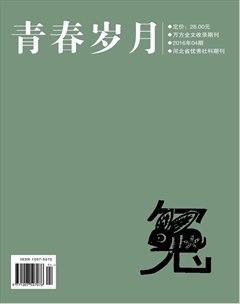Near-Death Experiences in Two Fictions
馬星晨
Abstract:As great American novelists in the twentieth century, both Katherine Anne Porter and Ernest Hemingway wrote the short stories about the near death-experiences in the different way. From the perspective of the death theme, the paper will discuss the two stories in two aspects: firstly, the relationship between writers and stories; secondly, the literary techniques including stream of consciousness and symbolism. Based on the discussion, it will help readers have a better and deep understanding.
Key words:Death; Near-Death Experiences; The Jilting of Granny Weatherall; The Snows of Kilimanjaro; Stream of Consciousness; Symbolism
1. Introduction
Katherine Anne Porter and Ernest Hemingway are both the great American novelists in the twentieth century. As an American novelist and short-story writer, Katherine Anne Porter is a master stylist and “The Jilting of Granny Weatherall” is a short story about the old womans struggle of life. As for Ernest Hemingway, “The Snows of Kilimanjaro” is regarded as one of Hemingways greatest works. In this story, he shows us that primitive nature and the proximity of death cut through the pretenses and lies of civilized life, forcing men to confront the truth about themselves —— especially the truth about their unmanly response to women.
2. Relationship between Writers and Stories
Both of Katherine Anne Porter and Ernest Hemingway tackle some of the major themes of fiction, including death and sex. Both of the two stories depict the near-death experiences and reflect the writers different attitudes toward death.
“The Jilting of Granny Weatherall” and “The Snows of Kilimanjaro” describe the protagonists last day and present the flow of consciousness in their minds related to their bygone days. In “The Jilting of Granny Weatherall”, despite of her normal and well- organized household over the course of a lifetime, Granny Weatherall has harbored a deep and abiding blow to her psyche and she is in deep denial about the basic truths of her life and character. In “The Snows of Kilimanjaro”, Harry is the man who is tired of his luxury and dissipation life and wants to “work the fat off his soul.” Besides, both of the two writers employ the stream-of-consciousness narrative technique as well as making sophisticated use of symbolism.
3. Stream of Consciousness in the Two Stories
In literary criticism, stream of consciousness, also known as interior monologue, is a narrative mode or device that depicts the multitudinous thoughts and feelings which pass through the mind.
In “The Jilting of Granny Weatherall”, Porter employs the stream of consciousness narrative technique to inform the reader of Granny Weatheralls life by giving readers uncensored access into Grannys mind, memories and experiences. It is easy to find clues from the stories structure which support the stream of consciousness writing. In “The Snows of Kilimanjaro”, Hemingway employs the stream of consciousness technique to present a picturesque scene of Harrys rich experiences and show his writing potentiality. There are five flashback parts printed in italics, clearly representing Harrys memories of his past as a solider, a husband, an expatriate, and a grandson, related to the topics as Paris, pain, death, quarrels, love and marriage.
4. Symbolism in the Two Stories
Murni elaborates that symbol is a person, object, image, word or event that evokes a range of additional meaning beyond and usually more abstract than its literal significance. A symbol may have more than one meaning and the most significant symbols do convey an indefinite range of meanings.
“The Jilting of Granny Weatherall” contains symbols such as the waste, color blue and the darkness and light. For instance, When Granny lies in bed unconsciously, she was thinking that “ I want you to pick all the fruit this year and see nothing is wasted...Dont let things get lost. Its bitter to lose things. ” On the one hand, it is partly practical in that Granny has had to support a family on not much money and has done that by using everything she can. On the other hand, it also shows Grannys nervousness about squandering life itself. “The Snows of Kilimanjaro” contains symbols such as the Kilimanjaro, snow, leopard, vultures and hyenas. In the story, Kilimanjaro symbolizes eternitys triumph over death. Climbing the mountain is the way to access God. The nobly towering mountain is in sharp contrast to Harrys decay in the plain.
5. Conclusion
Because of the mystery, fear, and anxiety prior to death, both of the two stories depict the oncoming death and show the inner thoughts of the near-death protagonists by the use of stream of consciousness. From the discussion, we have a good appreciation of the two stories. It is our time to think about the death problem and seize the day to do more meaningful works.
References
[1] 陶 潔. 美國(guó)文學(xué)選讀[M]. 北京: 高等教育出版社, 2011.
[2] Donaldson, Scott. The Cambridge Companion to Ernest Hemingway[M]. 上海: 上海外語(yǔ)教育出版社, 2000.
[3] J. A. Cuddon. A Dictionary of Literary Terms[M]. Harmondsworth: Penguin Books, 1984.
[4] Murni, Sri Minda. Literary Criticism. Medan:(Unpublished Course Material), 2004.

